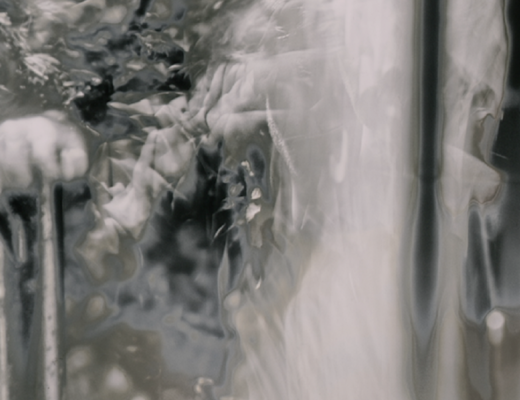Chaos Walking welcomingly deviates from the YA template and surprises with its visual design, but it crumbles under the weight of its unexplored ideas.
From its conception to this, its theatrical bow at last, Chaos Walking has remained a legitimate oddity. The choice to christen it the next big Young Adult movie franchise was always a dubious one, not least because of its sci-fi gimmick: a world where, due to a native germ on the colonized planet where the film takes place, everyone’s thoughts are heard out loud in a sonic cascade fittingly dubbed “Noise.” It’s a conceit without obvious cinematic application, a built-in problem in need of creative problem-solving. Enter Charlie Kaufman, a fairly logical screenwriter hire for tackling such tricky material, but again, a decidedly strange choice for Young Adult brand-building. He soon exited the project, however, and now nine years and almost as many screenwriters later, the film arrives, nearly a half-decade since blind faith in such franchises evaporated. The film’s origin is admittedly not as commercially misguided as its belated arrival suggests: the rights to Patrick Ness’s Chaos Walking trilogy — this film roughly covers the first book, The Knife of Never Letting Go — were acquired during the Twilight heyday, before The Hunger Games tetralogy had even kicked off, and at nearly the same time that deals were made for the likes of The Maze Runner and Divergent. But a shift in studios’ franchising strategies over the 2010s means that not only did numerous teen-facing, would-be series-starters crash and burn after a single film — looking at you Beautiful Creatures, The Mortal Instruments, and The 5th Wave — but even established properties like Divergent failed to complete their run, petering out with only one film left. And so, thanks to a remarkably protracted pre-production phase, poor initial test screenings, and delayed reshoots, the Doug Liman-directed Chaos Walking finally arrives in comically and almost unbelievably tardy fashion.
But that’s not all that’s peculiar here. The source material, while still intellectually and artistically limited in the way that most tween fiction is, defies (at least initially) much of the dramatic histrionics and structural mechanics that seemed to define the late-2000s boom of YA fantasy and dystopia. There is no brooding bad boy or large-scale governmental nefariousness or even much of a traditional narrative arc in the first of Ness’ novels. Instead, it’s very much a setup for later, larger conflict: the plot concerns a young man named Todd (Tom Holland) who lives in a small community called Prentisstown, a spacecraft crash survivor (Daisy Ridley) who is part of a second wave of planetary settlers, the former’s confusion at the latter’s lack of Noise, and their mutual escape through rugged terrain in pursuit of both truth and safety. The whole thing is of the retro/rustic dystopic lineage, yes, but to its credit, it’s also legitimately interested in well-paced world-building and in exploring its ideas rather than using them as mere window dressing to teenaged love. Again, not an obvious or even logical choice for filmic treatment, especially of the YA variety — unless someone somewhere was supremely confident in the ability to get all three of these made (spoiler: that ain’t happening) — but the absence of such narrative and emotional dramatics gives the filmmakers room to build a work rich and surprising in texture, with more space to realize its intellectual potential; think Harry Potter and the Deathly Hallows: Part 1, for a successful example.
For a while, Chaos Walking more or less delivers. Both the film’s aural and visual design are distinct, though the former requires a bit of patient immersion, as the cacophony of sounds — a mix of what is spoken out loud and what is thought out loud — are initially abrasive, even anxiety-inducing. The film is certainly concerned — in theory, anyway — with the social and interpersonal implications and consequences of this particular unreality, and so that unease may arguably be intentional, but it doesn’t make for particularly enjoyable viewing, even as it eventually becomes easy enough to settle into. The film’s visuals are more immediately appealing, and the filmmakers’ decision to re-conceptualize what Noise looks like is both surprising and effective (in the book, it is merely a swirl of emitted words and some images). There’s a fluidity to its presentation on screen, sometimes manifesting as wispy tendrils of watercolor flitting away from one’s head, other times as shimmering, holographic overlays of thoughts and memories, and still other times like the fuzzed rainbow static of a television monitor dissipating into the air. The details morph with mood and differ from person to person: sometimes the Noise is made of soft pastels and other times it’s all hot neons; one individual’s might look like smoke lazily permeating their space, another’s might appear as a constantly cracking whip. It’s not always flawlessly-executed, but it adds a welcome, fantastical abstraction to the film’s visual design.
The film’s greatest problem, however, is that it refuses to substantively engage with its own ideas, sabotaging what intellectual weight the source material possesses. The ills of colonialism? Check, but in passing word only, as the native Spackle population are only briefly glimpsed (we’re talking a roughly two-minute scene followed by a subsequent minute of thuddingly obvious “they’re not the aliens, we are” commentary). The marriage of religion and toxic patriarchy? Check. This element actually provides the film’s most cutting moments, its neo-western setting bearing something of Blood Meridian when at its best; here are images of brutal men inflicting brutality in their unstoppable march forward. But then, Chaos Walking feels the need to veer into archness, and so it dresses its baddie (Mads Mikkelsen) in a wooly bear-fur pelt, while the film’s devilish preacher figure (David Oyelowo) comes in the shape of a Pentecostal fanatic; his Noise burns in shades of furious violet and scarlet, he spews brimstone-laden judgments, and he wears some kind of tight, sleek jacket that would look more at home on a man riding a Kawasaki than a horse. Meanwhile, the male martyr character (Demián Bichir) looks like a costume-less Where’s Waldo, a real slouch-shouldered sad-sack in some goggle-eyed glasses, just in case its critique of macho masculinity and empty fervor weren’t obvious enough. There’s both thematic and narrative rationale for Viola’s lack of Noise, after all, and so the film gets to indulge in a bit of hollow gender commentary. For all that silliness, there’s enough of a thrust to make it a legitimate bummer when the climax — sorry, “climax” — proves to be laughably inconsequential, a perfect example of going out with a whimper. But perhaps most troublesome of all, given the film’s central conceit, is its thematic execution of Noise. There’s a proper study to be done on a society where minds possess no privacy and its destabilizing effects, but in relegating thoughts here almost exclusively to expressions of sex, violence, and bland notions of courage, characters are robbed all of subtext. There’s no interiority to interrogate, no complicating mysteries to intuit. There’s legitimate visual finesse to appreciate in the film, and so its labors are met with welcome ease, but in Chaos Walking, what you hear is what you get, and, frankly, it’s not enough.







